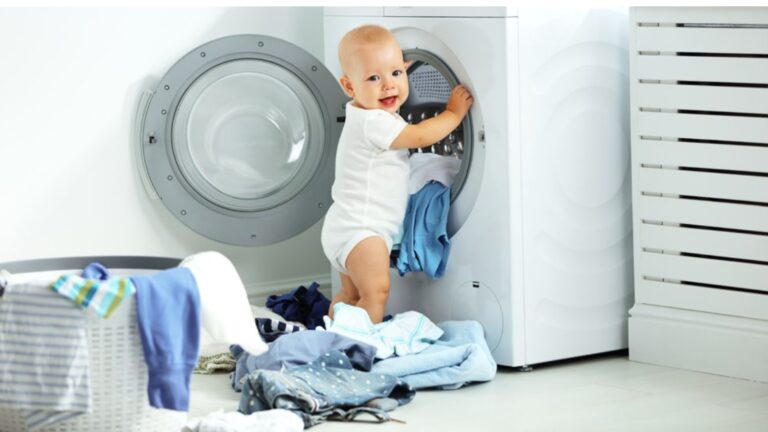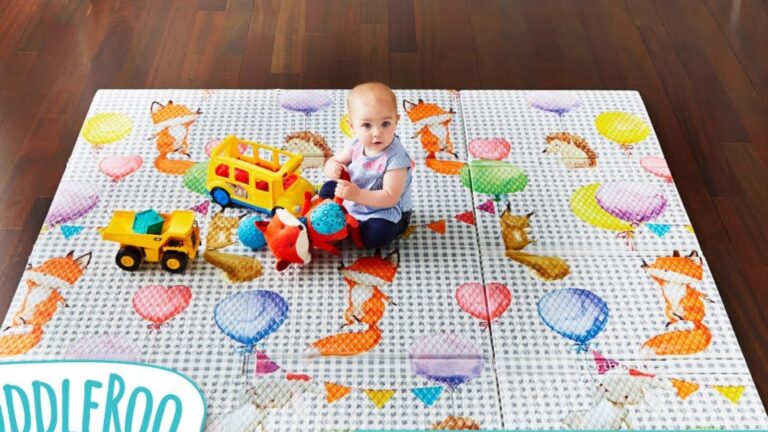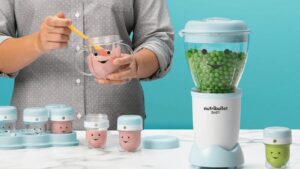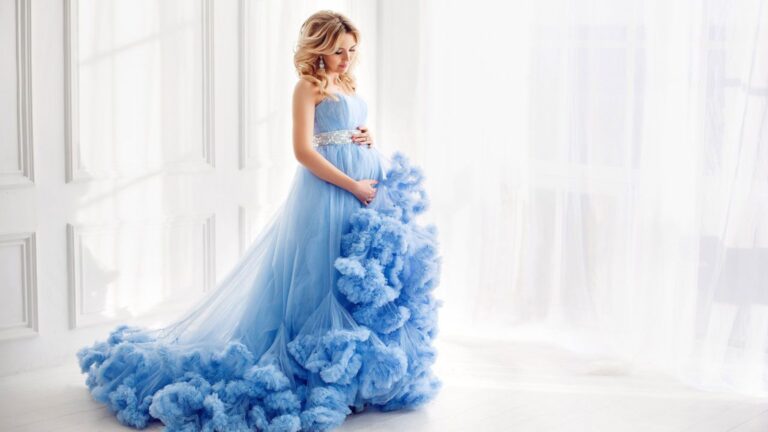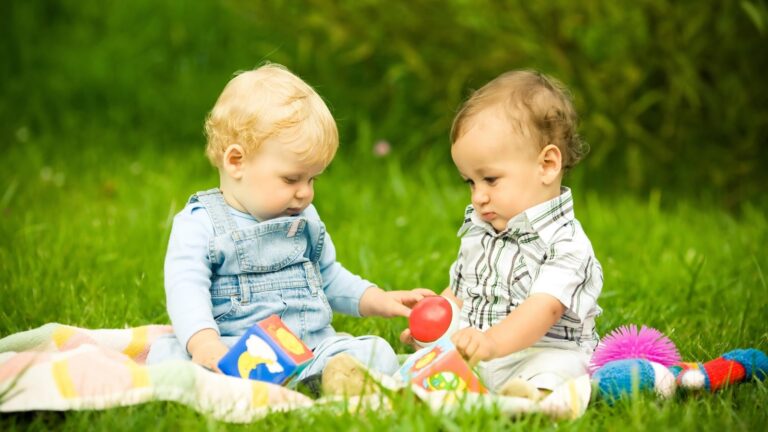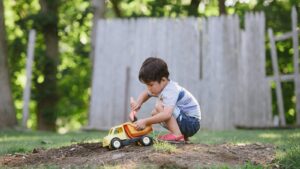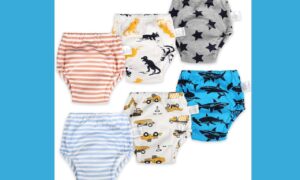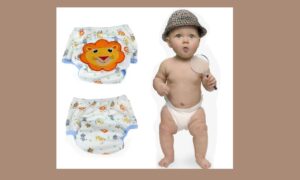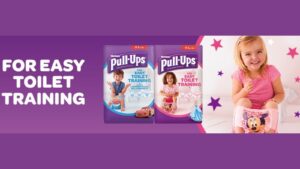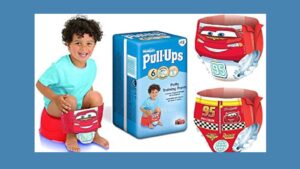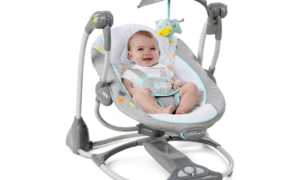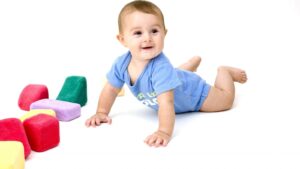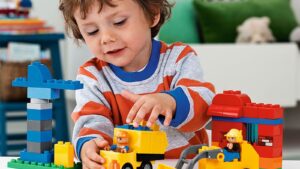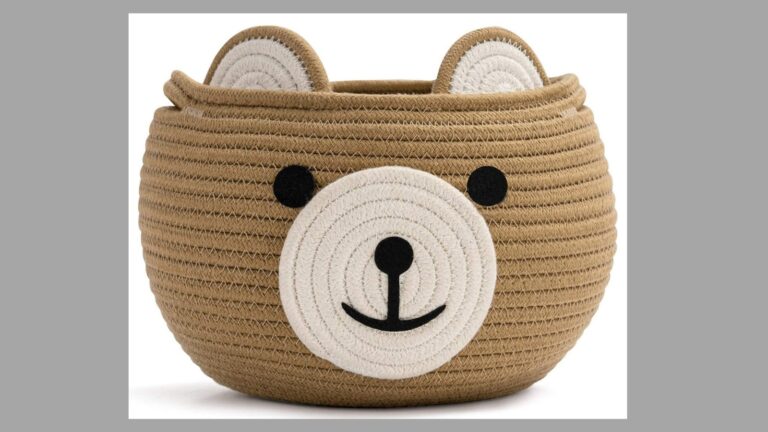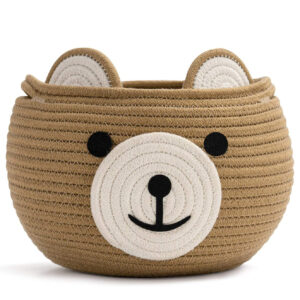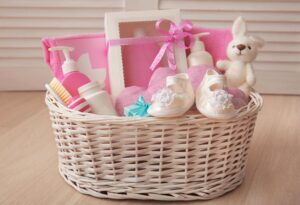Introduction
Taking care of your baby often feels like managing a million things at once. Washing their tiny clothes might seem like a simple task, but doing it the wrong way can cause discomfort or irritation to your baby’s delicate skin. Let’s break down everything you need to know about washing baby clothes the right way, so you can focus on what matters—your little one’s happiness and health. Learn how to wash baby clothes safely with tips on detergents, stain removal, drying, and storage to protect your baby’s sensitive skin.
Why Proper Wash of Baby Clothes is Important
Protecting Baby’s Sensitive Skin
Babies’ skin is much thinner and more sensitive than adults’, which makes it susceptible to irritation from dirt, allergens, and harsh detergents. Washing their clothes properly ensures that no irritants are left behind, keeping their skin safe and healthy.
Removing Harmful Residues
Even new baby clothes may carry dust, chemicals, or manufacturing residues. Thorough washing removes these potentially harmful substances, providing a cleaner and safer fabric for your baby to wear.
Preventing Allergic Reactions
Improperly cleaned clothes might trigger rashes, redness, or other allergic reactions. Using the right detergent and method of washing significantly lowers the risk of such problems.
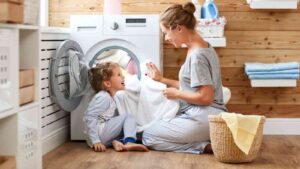
Preparing Baby Clothes for Washing
Sorting Baby Clothes by Color and Fabric Type
Sort the clothes into light and dark colors to prevent dye transfer. Separate delicate fabrics from sturdier ones to avoid damage during the wash.
Reading the Care Labels
Every baby outfit comes with a care label that specifies washing instructions, such as whether it’s machine washable or requires hand washing. Pay attention to these labels for the best results.
Removing Stains Safely
Babies are messy eaters, and stains are inevitable. Use a baby-safe stain remover or natural alternatives like baking soda and vinegar to pre-treat tough spots before washing.
Choosing the Right Detergent for Baby Clothes
Importance of Hypoallergenic Detergents
Hypoallergenic detergents are free from dyes and fragrances, making them perfect for baby clothes. These detergents minimize skin irritation and are gentle on delicate fabrics.
Avoiding Harsh Chemicals and Fragrances
Regular detergents often contain strong chemicals and artificial fragrances that can leave residues on clothes. Stick to mild, baby-safe options to ensure your baby’s comfort.
Alternatives: DIY Baby-Safe Detergents
If you prefer natural options, consider making your own baby-safe detergent using simple ingredients like baking soda, washing soda, and a mild soap bar.
Washing Baby Clothes: Step-by-Step Process
Pre-treating Stains
Gently rub the stained area with a baby-safe stain remover and let it sit for a few minutes. This step helps lift stubborn marks without damaging the fabric.
Choosing the Correct Wash Cycle
Select a gentle or delicate cycle on your washing machine. This prevents unnecessary wear and tear on your baby’s clothes while ensuring thorough cleaning.
Ideal Water Temperature for Baby Clothes
Warm water works best for removing stains and bacteria. However, if the care label recommends cold water, follow the instructions to avoid shrinking or damaging the fabric.
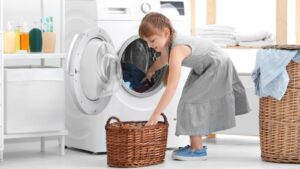
Tips for Drying Baby Clothes
Line Drying vs. Machine Drying
Air drying is the gentlest option, reducing wear on the fabric. However, a low-heat tumble dry can be convenient, especially during colder months.
Using Dryer Sheets: Yes or No?
Avoid regular dryer sheets, as they often contain strong fragrances and chemicals. Opt for baby-friendly alternatives if needed.
Preventing Shrinkage in Baby Clothes
To prevent shrinkage, avoid high heat and check the care label for drying instructions. Removing clothes while they’re slightly damp and air drying them can help maintain their size.
How to Store Baby Clothes After Washing
Folding and Organizing
Once the clothes are clean and dry, fold them neatly to save space and keep them wrinkle-free. Consider using drawer dividers or baskets to separate items like onesies, socks, and bibs for easy access.
Keeping Clothes Fresh and Clean
Place a sachet of lavender or another baby-safe scent in the storage area to keep the clothes smelling fresh. Avoid mothballs or harsh deodorizers, as their chemicals can be harmful to babies.
Long-Term Storage for Hand-Me-Downs
If you plan to save baby clothes for future use or hand-me-downs, store them in airtight, plastic bins to protect them from moisture and pests. Label each bin by size and season for easier organization later.
Additional Tips for Washing
Washing Cloth Diapers Separately
Cloth diapers should always be washed separately from regular clothes to ensure hygiene. Use a hot water cycle and a cloth-diaper-safe detergent to remove bacteria and stains effectively.
Frequency of Washing Clothes
With a newborn, clothes might need to be washed more frequently due to spit-ups and diaper leaks. Wash soiled items promptly to avoid stubborn stains and odors.
Managing Large Laundry Loads with Newborns
To manage the constant influx of dirty baby clothes, consider doing smaller, more frequent loads. This approach keeps laundry manageable and ensures your baby always has clean clothes ready.
Common Mistakes to Avoid When Washing Baby Clothes
Using Fabric Softeners
Fabric softeners often leave behind residues that can irritate sensitive skin. Instead, use natural softening agents like vinegar if needed.
Overloading the Washing Machine
Cramming too many clothes into one load reduces the washing machine’s effectiveness. Wash baby clothes in small loads to ensure thorough cleaning.
Ignoring Stains Until Later
Stains are harder to remove if left to set. Treat them as soon as possible, especially with baby formula or food stains that can become stubborn over time.
The Environmental Aspect to Wash Baby Clothes
Reducing Water and Energy Usage
To conserve resources, use energy-efficient washing machines and wash full loads when possible. Cold water cycles also save energy while being gentle on clothes.
Choosing Eco-Friendly Detergents
Eco-friendly detergents are biodegradable and free from harmful chemicals, making them safer for both your baby and the environment.
Recycling Old Baby Clothes
When your baby outgrows their clothes, consider donating them to charity or passing them on to friends. Recycling reduces waste and gives the clothes a second life.
Conclusion
Washing baby clothes is more than just throwing them in the washing machine—it’s about ensuring your baby’s comfort and well-being. From selecting the right detergent to avoiding common laundry mistakes, every step matters. By following these tips, you can make laundry day easier while keeping your baby’s clothes clean, soft, and safe for their sensitive skin.
FAQs
1. Can I wash baby clothes with regular detergent?
It’s best to use a hypoallergenic detergent designed for babies to avoid skin irritation. Regular detergents might leave residues that can cause discomfort.
2. How often should I wash baby clothes?
Wash soiled clothes immediately and do laundry every 2-3 days to keep your baby’s wardrobe fresh and manageable.
3. Should I iron baby clothes after washing?
Ironing is optional, but it can help eliminate any remaining bacteria. Use a low-heat setting and avoid ironing delicate fabrics.
4. Is it safe to use bleach on baby clothes?
Avoid using bleach as it can be harsh on the fabric and may irritate your baby’s skin. Opt for gentler stain removers instead.
5. Can I use the same detergent for baby and adult clothes?
While it’s possible, it’s better to use a detergent specifically designed for baby clothes to ensure it’s free from harsh chemicals.

